Mindy Newell: Standby
Yesterday morning, our friend and ComicMix columnist Mindy Newell suffered a family medical emergency. Her column will be back soon, and of course we all wish her and her family the best. Hang in there, Mindy!
Yesterday morning, our friend and ComicMix columnist Mindy Newell suffered a family medical emergency. Her column will be back soon, and of course we all wish her and her family the best. Hang in there, Mindy!
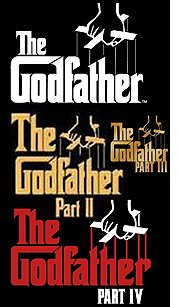 Bought and watched The Hobbit DVD when it came out. My Mary and I had watched the full IMAX version in the theater; it’s one of her favorite books. I’m pretty fond of it as well.
Bought and watched The Hobbit DVD when it came out. My Mary and I had watched the full IMAX version in the theater; it’s one of her favorite books. I’m pretty fond of it as well.
Enjoyed the movie again and look forward to the next installment. However, I had problems with it. Both the way that the story is being divided into three films and from some of the action sequences, it’s playing out as a prequel to the Lord Of The Rings films. The book The Hobbit is not a prequel; it’s a stand alone story that has some story elements in common with LOTR. In the film, however, it’s coming off very definitely as a prequel to the point, IMO, that the story is changed or even twisted a bit to make it fit that mold. Visuals such as the race through the Underground Kingdom of the Goblins was very reminiscent, visually, of the race through the Mines of Moria in LOTR. What was stunning and even surprising in the LOTR movies looks rehashed here.
Generally speaking, when I’m reading or watching a story, I want to know what happens next – if I want to know anything more at all. Some stories, like Casablanca, doesn’t need prequels or sequels (although a sequel was discussed early on for Casablanca and, fortunately, never worked out). With Star Wars, after the original trilogy was done, I was ready to see what happened next but George Lucas decided he wanted to tell what happened previously. I watched but it’s not what I wanted and a lot of the public was less than enthralled as well. It’s only now when Disney has assumed ownership of the whole shebang that Episode 7 – “and then what happened?” — is being prepared.
The prequel trilogy of Star Wars changes the thrust of the story. The original trilogy is about Luke Skywalker and his coming of age, learning who he is, and becoming the hero his father might have been. The prequel trilogy changes the arc of all six films; it becomes about Anakin Solo, his fall and his redemption. I liked it better when it was Luke’s story.
I don’t absolutely hate prequels; I’ve done them myself. The last two GrimJack arcs I’ve done have technically been prequels. I also did a four issue story on The Demon Wars in GJ and, in the back-up space, my late wife Kim Yale and I did a story of young John Gaunt which would also qualify as a prequel. In each case, however, it revealed aspects of Gaunt that helped in understanding who he was and which weren’t going to be told in any other way. Each was also a stand-alone story; you needn’t have read any other GJ story to understand these stories.
There can be problems with sequels as well. Does it add to the story or does it just water it down? Godfather II deepened and expanded on the first film; Godfather III – not so much. The original Rocky is a great film; none of the sequels improved on it and only tarnished the story. OTOH, Toy Story 2 was better than the first film and Toy Story 3 was better still.
I can understand the desire with the studios to go back to the same material; it has a proven track record. There’s more money to be made not only from the movie but from all the ancillary crap. Less risk (in theory) and more money (in theory).
Maybe what it comes down to is this for sequels and prequels – does this story need to be told? When you think about it, that’s the same criteria as every other story, isn’t it? Or should be. Is this story worth telling? Not – will this make more money? Sadly, the reason for too many sequels and prequels is the monetary one.
MONDAY MORNING: Mindy Newell
MONDAY THE REST OF THE DAY: Wait And See
TUESDAY MORNING: Emily S. Whitten
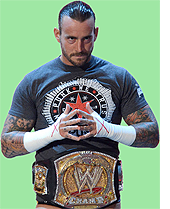 OK, I admit it: I’m a pro-wrestling fan. I’ll even do you one better. I’m a smart-mark. Yeah, I’m not only a fan, I’m a fan of the business behind the product. I know the difference between an Irish whip, a German suplex, and an inverted front face buster into a crossbar arm-breaker. I’ve tried hard to bury this part of my nerd-quilt for a very long time. Almost six years. But here on the precipice of Wrestlemania, I find myself DVR’ing episodes and instigating debates with fellow fans. There is no denying, kiddos. Pin my shoulders to the mat. I’m not kicking out of this one.
OK, I admit it: I’m a pro-wrestling fan. I’ll even do you one better. I’m a smart-mark. Yeah, I’m not only a fan, I’m a fan of the business behind the product. I know the difference between an Irish whip, a German suplex, and an inverted front face buster into a crossbar arm-breaker. I’ve tried hard to bury this part of my nerd-quilt for a very long time. Almost six years. But here on the precipice of Wrestlemania, I find myself DVR’ing episodes and instigating debates with fellow fans. There is no denying, kiddos. Pin my shoulders to the mat. I’m not kicking out of this one.
Like most fans of the sport (and yeah, I use the term loosely), I was introduced to it while I was but a wee one. My father, devoid of any other real hobby or vice, would every-so-often bring home a taped pay-per-view from a friend or co-worker. And I would be allowed, even on a school night, to stay up and watch it to the end. It led me to watch the Saturday morning recap shows (as we didn’t have cable back then). It led me when I got the Internet, to seek message boards, news groups, and the like. When I got to college (and got cable), it was a twice a week obsession. The real question of course being simple: after the ‘nostalgia was gone well into my teen years, what kept me a fan? The sport and the business.
Behind the scenes, wrestling is a fascinating machine. Bookers and top-brass give shots to up and coming talent, challenging them to connect with fans. The talent themselves, having spent years on the road honing their craft (both being able to perform the moves, and project a character), are tasked with becoming stars and elevating the company that gave them the chance in the first place. Merchandise is made, and product is eternally analyzed. The art itself isn’t just on a TV screen, or a bingo hall… it’s in a board room, and in the locker rooms; where creative minds meet all for the sake of entertaining the niche-market built specifically around itself. Sounds familiar, doesn’t it?
Look down on it all you want, but for the money, pro-wrestling is a living breathing comic book presented for the masses every week. Hulking super men and woman battle one-another endlessly. They become heroes, turn villainous, unite to stop larger threats, and every couple years things reset. Some stories are played for high drama while others are strictly slapstick. Continuity is cited, forgotten, and brought back into the fold when it serves a higher purpose. Vintage characters come back for cheap applause and shock value. Most people hold the independent presentations to be “better, and closer to what the medium should be.” And my favorite similarity? Every smart fan thinks he knows what’s going to happen; and that he could write it better if someone would just listen.
That sounds awfully familiar, doesn’t it?
And how about I cite a little topical note to boot! This past week, we all saw DC implode just a little as the curtain drew back and spat out several creators running for the hills due to creative differences. Back in 2011, angered over his own creative differences with his contract and character, CM Punk walked out to the stage and took over the last few minutes of the weekly WWF show Raw. He proceeded to air his grievances about the business, and broke the 4th wall like it was made of paper.
Now, this could all have been a work (fake…) but it was treated just like Gail Simone’s exit off of Batgirl. Of course Gail bowed out gracefully, didn’t complain at all, and was genuinely amazing about the whole ordeal. Punk was a heel (a villain), so why not be a big baby about all of it, right? At the end of the day: Punk got the spotlight like he’d always wanted. Gail Simone is back on Batgirl. And as I type this, I’m betting dollars to maple-glazed bacon donuts… that DC editorial is saving the life of John Stewart.
Suffice to say I’m finding a way to let my freak flag fly again. Wrestling may very well be scripted, but so are my favorite comics. And just like a great moment in comics like Otto Octavious successfully taking over Peter Parker’s body, so too can I enjoy John Cena using a never-seen before hurricanrana in his repertoire in order to defeat his opponent and earn his title shot at the big pay-per-view. It’s serialized story telling, in either form. Replace super powers with inhuman tolerance for pain. Replace indulgent caption boxes and exposition dumps for long-winded promos littered with catch phrases. Don the t-shirts, and attend the conventions. Hell, if you think you can do better… maybe start doing it on your own, and sell your product in your backyard.
Wait, scratch that. Kids: don’t become backyard wrestlers. Or indie comic creators. You’ll end up on your back either way.
And for any of my smart-marks out there: I’m pulling for Punk to beat the streak. It won’t happen of course, but if he can destroy the Undertaker’s Urn after losing the match, he’ll keep all the heat, and it’ll give Taker and Punk one more match next month.
And for any of my comic-insiders out there: I’m personally hoping Otto dials back the megalomania just a skosh, and Slott keeps him under the mask for at least a year. And when it comes time to put Peter back in the drivers seat… Otto either gets a young new body or yields to death’s embrace for the greater good.
Natch.
SUNDAY: John Ostrander
MONDAY: Mindy Newell
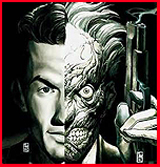 None of us are the same person all the time. We change according to the people we are around; they draw different aspects of us out of ourselves. A sibling may draw us into the role of younger or older sibling automatically. A guy talking with other guys may talk and act one way and, on seeing a pretty girl, turn around and talk and act completely differently. Have you ever said or felt that a certain person brings out the best or worst in you? It’s probably true. You do it to others as well.
None of us are the same person all the time. We change according to the people we are around; they draw different aspects of us out of ourselves. A sibling may draw us into the role of younger or older sibling automatically. A guy talking with other guys may talk and act one way and, on seeing a pretty girl, turn around and talk and act completely differently. Have you ever said or felt that a certain person brings out the best or worst in you? It’s probably true. You do it to others as well.
What’s true in life should be true in our writing. One of the major purposes of supporting characters, major or minor, good or bad, is to draw out aspects of the protagonist. There are differences between who we think we are and who we actually are and it’s other people and/or difficult situations that draw these out and reveal them to ourselves or to the readers of our stories.
Nothing reveals a character more than contradictions. The deeper the character, the more profound the contradictions. Let’s do an exercise. Take a sheet of paper and on one side in a vertical column write attributes or virtues that a character may have. For example, our character Jimmy Bill Bob is friendly, courteous, kind, obedient, cheerful, thrifty, brave, clean, and reverent. That’s right – a real Boy Scout. Now, draw a line down the center of the page and in a column opposite the first attributes, write their opposite. Be creative. You can’t use un – as in unkind or ir- as in irreverent. Find words that you feel mean the opposite of the word on the left hand side of the line. I’ll wait.
Done? Fine. Here’s the thing – if everything you’ve written on the left hand side of the line is true about the character, so will everything on the right hand side be true in some way to some degree. Not at the same moment, but it can flip from one to the other in a nanosecond. It doesn’t have to be a total change which would be kind of psychotic but it can and does happen just that fast. You’ve seen it in others and I’m sure you can see it in yourself, in your actions.
It also comes down to how you define each term. In what way is a given character courteous; in what way are they rude? An act of bravery can be a small thing as well as a big thing. If this is true in real life – and I submit that it is – then it should be true in the characters that we write.
I also want to pass on something I gleaned from a terrific book on acting called Audition by Michael Shurtleff. He noted that actors loved to do “transitions” from one moment to the next, from one emotion to the next. Fates know that I was guilty of that in my acting days. He proclaimed that transitions were the death of good acting. We didn’t do it in real life; we just went from one emotion to the next often showing them hard against one another, in great contrast.
This is true in writing as well. Don’t explain the contradictions; state them and move on to the next moment. The reader will sort them out. Just make sure that the moments are true; that you’re not doing a contradiction as a short hand for a character. They are meant to reveal things about the character. A gimmick is a gimmick and makes for bad writing. Let contradictions reveal the character to you and then you can show them to your reader. The reader will be stunned and then nod in agreement because you’ve explored something that, deep down, they know – that people, and life, are a nice messy ball of contradictions.
That makes it true.
MONDAY MORNING: Mindy Newell
TUESDAY MORNING: Emily S. Whitten
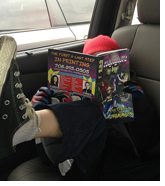 A week ago today, Unshaven Comics popped our 2013 con cherry with a bang right in our own backyard. OK, not literally our backyard, but certainly close enough given how far we’ll end up traveling this year in the name of indie comics. Our first con? A return trip to Orland Park (a way-south suburb of Chicago), and the newly minted DanCon: Spring show. It was, as they say, business as usual. Lucky for us? That business was good.
A week ago today, Unshaven Comics popped our 2013 con cherry with a bang right in our own backyard. OK, not literally our backyard, but certainly close enough given how far we’ll end up traveling this year in the name of indie comics. Our first con? A return trip to Orland Park (a way-south suburb of Chicago), and the newly minted DanCon: Spring show. It was, as they say, business as usual. Lucky for us? That business was good.
DanCon, founded by the appropriately named Dan Royer, is a testament to old-school comic conventions. Held inside the Orland Park Civic Center, the day saw hundreds of local friends, families, and fun-seekers roaming through the two medium sized rooms that held the nerditry. One room for creators, and one for dealers. Betwixt them were registration lines, homemade concessions, and a photo op area. In short? It was everything a li’l con should be… logistically speaking. But that’s not what this write-up is really about. Logistics are important of course (something WizardCon seemingly can’t get right to save their life), but what sets this show apart is the community created around it.
A smaller show breeds interaction. Between fans and creators and between the creators themselves. It’s rare amidst a large show for people to be as relaxed as they were at DanCon. And while there were no D-list celebrities or obligatory Batmobiles to increase admission (or table) prices… those who came, came to buy and enjoy themselves. Not to knock a larger show experience entirely of course; but here was a single day, a single experience, uniting show goers with the core essence of our little area of pop-culture: comic books.
Having attended dozen of shows over the last five years, it’s become clearer and clearer that we all really share a singular experience. Whether our specific offerings target tweens, kiddies, horror fans, cape-lovers, trekkies, or any of the other scads of specific would-be-nerds… we are all united in our persuit of admiration and celebration. With each successive show, comes a familiarity with fellow creators. And that begets a sense of camaraderie. It was fitting that the first three guys I gave the all-too-familiar “nod of hello” to responded with positive comments on my fatherly ability to capture photos of my son and share on Facebook. “Who cares about those Samurnauts, your son is awesome.”
Aside from being able to share war stories with compatriots like “Dashing” Dirk Manning, “Jesus-Lover” Jon Michael Lennon, “Lusts-For-Me” Leo Perez and Tom “My Last Name Seriously Is” Bacon… the real zeal of the day came from a pair of interactions that have filed themselves away as realizing you might just be making it after all.
The first? A fan came walking down the aisle… in one our shirts. Now, let me preface that in five years of actively selling our wares at shows, our only merch has been books and art. The tees that we sport are made on a website, where we literally let them rot, until we need a new batch. On the rarest of rare occasion, people ask where we get them, and we direct them to the site. Aside from a specific set of fans-turned-friends, we never expect to see ourselves out in the crowd. Suffice to say? Seeing one of our shirts unexpectedly was quite the treat.
And the second? Prior to DanCon, I took it upon myself to message a few friends who lived around the area about the show. One such acquaintance, a great gal I’ve known since junior high school, came out amidst her day with their family. Small talk was exchanged, some introductions to my wife and boy (who made a brief appearance), and then a purchase of our book for her son.
I should note that said son exchanged a few great accounts of his recent Spider-Manning to me via his Xbox, and I couldn’t help but wonder if that’d be my own scion in a few short years. But I digress. Not even an hour later, after my friend had left, she’d snapped the picture attached to this article. I know it’s a trope of so many in our position… but seeing even just one small fry immersed in a book I was a part of? It’s what makes so many lost nights and weekends worth it. Of course if said li’l dude shows up next year looking for more books? All the better!
Ultimately, I could think of no better way to kick off 2013 for Unshaven Comics. In this year, on our quest to raise enough capital to finance our way to San Diego in 2014… DanCon 2013 was a fitting start. Thanks in large part an admirable promoter (and his always nice wife and staff), and a well-thought-out convention built to support the community that seeks the intimate interaction a small con excels in. Little did you know, it’s not just affirming for the fans – it’s even more gratifying for creators!
SUNDAY: John Ostrander
MONDAY: Mindy Newell
 Today is Saint Patrick’s Day, a day to celebrate all things Irish, a day when real Irishmen and women hide in their homes while Amateur Irishmen take to the streets and the pubs. It’s a day when the city of Chicago – no lie – dyes the mouth of the Chicago River green… or even greener than usual. Given that this year Saint Paddy’s day occurs on a Sunday, I suspect that the celebration has been going on since at least Friday and may well last into next Thursday what with the whiskey and the beer and the general all around vomiting. Ah, glorious!
Today is Saint Patrick’s Day, a day to celebrate all things Irish, a day when real Irishmen and women hide in their homes while Amateur Irishmen take to the streets and the pubs. It’s a day when the city of Chicago – no lie – dyes the mouth of the Chicago River green… or even greener than usual. Given that this year Saint Paddy’s day occurs on a Sunday, I suspect that the celebration has been going on since at least Friday and may well last into next Thursday what with the whiskey and the beer and the general all around vomiting. Ah, glorious!
Since we’re celebrating things that are Irish, I’ll be mentioning some of me own favorite Irish films. You may have different ones and I’ll drink to those as well (it’s a day for it) but these are my particular favorites.
[[[The Quiet Man]]]
Classic. John Ford directed, John Wayne and Maureen O’Sullivan star, Victor McLaughlin, Ward Bond and Barry Fitzgerald co-star with a spectacular cast in this 1952 film about a retired American boxer who returns to the wee Irish village where he was born, finds love with a tempestuous redhead and a feud with her ill-tempered bully of a brother.
If there is one Irish themed film that most Americans know, I bet it would be this one. I love it, too, but there are things that bother me about it. First – I can’t really determine when it happens. Given what the characters say in the movie, I’m assuming it’s set before the establishment of the Republic of Ireland but I’ve never been sure. Secondly – there’s a casual and accepted treatment of women (“Here, sir – a stick with which to beat the lovely lady.”) that is a little hard to take. Lastly, the characters are all colorful but they’re stereotypes.
For all that, I love the film. John Wayne gives a fine performance and there are really romantic moments where he’s very tender. Barry Fitzgerald was never more of an Irish leprechaun than here and says one of my favorite lines; on looking at the wreckage of Wayne and O’Sullivan’s wedding bed the day following the wedding night, he murmurs, “Impetuous! Homeric!” Makes me laugh every time.
[[[The Commitments]]]
Alan Parker’s 1991 film about the formation of a Dublin-based soul band features largely a cast of unknowns taken from the Irish music scene. Why soul? The band’s organizer, Jimmy Rabbitte (played memorably by Robert Arkins) puts it this way: “The Irish are the blacks of Europe. And Dubliners are the blacks of Ireland. And the Northside Dubliners are the blacks of Dublin. So say it once, say it loud: I’m black and I’m proud.” Hard to argue with logic like that.
You get the feel that this is far more the real Ireland than with The Quiet Man. It also has an incredible score; the soundtrack of new versions of classic soul and R&B is itself now classic. Andrew Strong who plays the band’s lead singer, Deco Cuffe, could give Joe Cocker a run for his money. Funny, revealing, and you can dance to it. What more do you want from a movie?
This is a weird damn movie from the year 2000 filled with the very best of black Irish humor. I don’t think I can improve on IMDB’s pithy description: “A woman becomes furious when her husband arrives home from the local pub and turns into a rat.” It stars Imelda Staunton and Pete Postlethwaite and focuses on the family, none of whom seem all that surprised that the man of the house has turned into a rat. One of the taglines for the movie is “He might eat maggots and live in a cage but he’s still our Dad.”
Staunton, who some may recognize as Dolores Umbridge from some of the Harry Potter films, is simply superb. The Irish accents are a bit thick and may take some getting used to but there are moments of jaw dropping comedy in this. For all its surreal premise, this also seems to capture something very real in the Ireland in which its set. Not for everyone, I think, but I loved it.
[[[Waking Ned Devine]]]
Not only my favorite Irish film but one of my favorite films of all time – period. The 1998 film, written and directed by Kirk Jones, stars Ian Bannen, David Kelly, and Fionnula Flanagan and is set in the small town of Tullymore. Someone there has won the Lotto; Jackie O’Shea (Bannen) and Michael O’Sullivan (Kelly) are determined to find the winner before anyone else knows and help them spend their winnings. The winner, they discover, is Ned Devine of the title and the shock of learning he’s won has killed him. Jackie, after a dream – a “premonition” – decides that Ned’s spirit wants Jackie to claim the prize by pretending to be Ned so it doesn’t go to waste.
It doesn’t go quite as planned.
To be honest, after first seeing the trailer I wasn’t sure I wanted to see the film. For reasons I won’t try to explain here, there were glimpses of a naked David Kelly on a motorbike rushing around. Aged male backsides are not an inducement to me. However, My Mary really wanted to see it so we went.
[youtube]http://www.youtube.com/watch?v=PnIDRm7OLdo[/youtube]
There are some impeccably timed moments in the film and none greater than the climax. All I’ll tell you is that it is a very dark Irish joke and the first time I saw it in a movie theater, I literally nearly fell out of my seat, laughing hysterically. The row of seats we were in shook because I was laughing so hard. I tried to smother my laughter but people were turning to look at me. I couldn’t help myself. I have it on DVD and I laugh just as hard every time I see that climax. I know its coming, I know it by heart, and it shouldn’t affect me like that but it does.
Over repeated viewings I’ve become aware of story flaws and inconsistencies here and there but I just don’t care. I adore this film. It also has one the best movie soundtracks that I know and I play it often by itself.
So, this Saint Patrick’s day, you can go out and drink yourself into oblivion or until you see all the snakes St. Patrick drove out of Ireland but I’m going to stay in and watch one or all four of these films. Just be sure to get home safely so you can be around for St. Patrick’s Day next year and watch ‘em yourself.
Beannachtam na Feile Padraig!
Happy St. Patrick’s Day!
MONDAY MORNING: Mindy Newell
TUESDAY MORNING: Emily S. Whitten
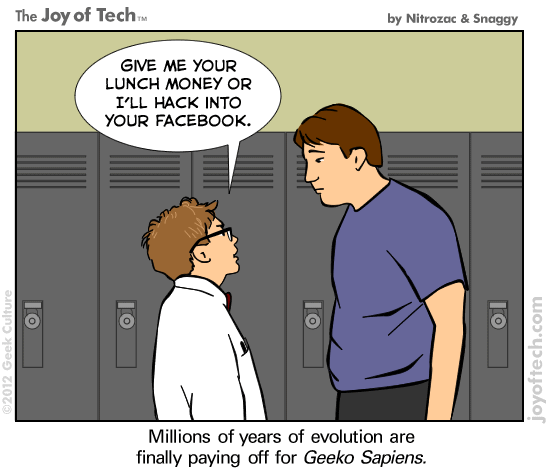
A few weeks back, an esteemed colleague of mine (oddly enough this time, not Mike Gold…) pitched a debate for my podcast: “Have nerds won? And if they have… is it a good thing?” Well, it was a great idea, and the debate on my show was fairly one sided. Now, after plenty of time to steep on the topic, I can plainly state my opinion; we have, and it is.
 On his blog last week, Jerry Ordway wrote bravely and feelingly about being a pro in comics when your age is over 50. Here’s a man who has been a comic book star of long standing and now finds it hard to get any work. His skill, ability, and desire haven’t diminished; he’s just older (and more experienced) than he was back then. He had an exclusive contract with DC and, in its final year, the company treated him deplorably, not giving him any work but not letting him get any work elsewhere.
On his blog last week, Jerry Ordway wrote bravely and feelingly about being a pro in comics when your age is over 50. Here’s a man who has been a comic book star of long standing and now finds it hard to get any work. His skill, ability, and desire haven’t diminished; he’s just older (and more experienced) than he was back then. He had an exclusive contract with DC and, in its final year, the company treated him deplorably, not giving him any work but not letting him get any work elsewhere.
I completely sympathize with him and can echo many of his statements. Is there ageism in comics? Demonstrably, at least for talent. On The Other Hand… some of the top editors at both Marvel and DC are around our ages. If the theory is that the talent needs to be younger in order to “get” or appeal to the younger reader, why are the editors immune? I sometimes feel like I’m in the “Bring Out Your Dead” segment from Monty Python And The Holy Grail.
Me to editor: “I’m feeling better!”
Editor to me: “You’re not fooling anyone, you know!”
I can’t claim that it’s universal. Dark Horse has been very good in giving me work and, in turn, I think I’ve given them good work in return. But I don’t seem to get any replies to e-mails that I send to the Big Two. OTOH, there are writers my age (or thereabouts) who do get work. Often they’re good friends with the given editor or Editor-In-Chief. I can’t complain about that, either; it’s worked in my favor in the past and can still work for me. Randy Stradley over at Dark Horse has been a friend as well as an editor and I get work from him.
Editors are also under far more pressure these days to produce higher sales. I and others used to nervously kid that, even with companies that were large conglomerates, comics were relatively free to do what they wanted because the money their sales brought in were chump change to Corporate Masters. That’s changed; superhero movies and games and TV shows are all big business and rake in tons of money and with that comes greater corporate oversight. With that comes the desire for more sales (How do you determine if you’re successful in corporate America? If you sell more of whatever you make than you did before and/or more than the competition). With that comes other problems.
The comic book market has a finite number of buyers with a finite amount of money to spend on the product. Digital sales might change that and expand the market base but I don’t know if the figures are in on that yet. So – how do you increase sales in a finite market?
One of the truisms of Hollywood is that “Nobody Knows Nuthin’.” Often, the folks in charge don’t really know what sells or why. Oh, they have theories but most often they look at what’s sold and try to do more of that or see who sells and try to hire them. You might think, if that held true in comics as well, that guys like Jerry Ordway would get more work.
Ah, but in comics, they believe the fans have short attention spans and what works in “new.” Not new characters or concepts but new variations on what you have, i.e. Superman minus red swimming trunks on his costume. That’s new, right?
I’m not dissing the notion. Fans, especially male fans, get bored after a few issues. They want something they haven’t seen before. That’s where folks like Jerry and myself run into problems; it’s assumed by editors and perhaps by fans that they’ve seen all we have to offer. Doing something well is not the point; giving the fans something new with which to get excited is the point.
OTOH, the fan base is the fan base. It’s getting older as well and, from what I’ve seen, it’s not growing. Isn’t it reasonable to assume that they would want to see an old favorite like Jerry Ordway? The object of the game is to get the reader to part with their hard earned money to buy a given book; Jerry’s done that. Combine him with a writer like Gail Simone or Geoff Johns and you think that wouldn’t sell? He knows how to do the work and how to please the fans.
Part of the problem also is, to get more sales, you need either a) for the fans to have more disposable income to spend on comics and/or b) bring in more new readers, preferably younger readers. On the latter, I’m not so sure that ship hasn’t sailed. The time to bring in new readers is about when they’re ten. Comics didn’t do that; they didn’t produce kid friendly comics (they still don’t) and would-be readers got lost to the video game market.
And don’t get me started on how they’ve ignored female readers. That’s a column right there and Mindy and Martha write about more knowledgably than I. That doesn’t mean I won’t add my two cents as well at some point.
In fact, this whole topic needs everyone’s two cents. I picked this topic up because I think it needs to be pursued. If you want folks like Jerry (or, yes, me) to get more work, say so in letters, in blogs, in other columns. If you think that comics are stories, not just product, and who does them are not just widgets, say something. If the conversation dies, if no one cares, then there’s no reason for the companies to care, either.
Keep the discussion going.
MONDAY MORNING: Mindy Newell
TUESDAY MORNING: Emily S. Whitten
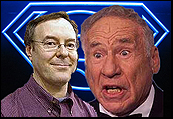 Hey kiddos, this intro is a bit of a winding path. I feel it necessary so, please, bear with me. Due largely to it not being football season, my radio has been officially turned off the past month or so. As I trek into and out of my day job some 35-45 minutes away, I have most recently found a love of podcasts. Specifically, I’ve found WTF by Marc Maron to be the best of the bunch.
Hey kiddos, this intro is a bit of a winding path. I feel it necessary so, please, bear with me. Due largely to it not being football season, my radio has been officially turned off the past month or so. As I trek into and out of my day job some 35-45 minutes away, I have most recently found a love of podcasts. Specifically, I’ve found WTF by Marc Maron to be the best of the bunch.
Within his hour-ish show twice each week, he interviews any number of comedians, musicians, or figures of pop-culture. But unlike your traditional interviewers, Maron always takes to a free-form conversation that usually drills down to the core of his interviewee… when he himself isn’t revealing his own intricately maudlin and beautiful sentiments on his own life. Recently I listened to such a conversation Maron had with Mel Brooks. Amidst the amazing discussion they shared on life, on being Jew-ish (yes… Jew-Ish), and the inherent entropy of life itself, Mel retorted a line that sunk to my own core: The only way to move in life is forward.
Mel Brooks’ career is legend. When I stumbled on my father’s VHS of Blazing Saddles, it absolutely changed my way of thinking when it came to comedy. Further study of the life and times of Mr. Brooks are staggering. But I digress. It’s this concept of “forward” that resonated with me.
Suffice to say, I hear many times in my e-mailing of various mentors and friends how young I am. But at 31, married, with a 1 year old butt-scooting about… I don’t feel young. I’ve changed day jobs so many times, it boarders on the hilarious. I’ve owned more cars in my driving life than either of my parents did in twice the time. And it seems like I’ve been trying to break into comics for over a decade.
To look at man like Brooks, who has worked now my entire life twice over, is a testament to who I’d like to be. My mother, whose Jewish Guilt™ knows no bounds, is never three connected statements away from telling me I work too much. And while yes, I spend upwards of 16-18 hours in front of a computer making stuff, it’s not as if I’m working for naught. Some of that time pays my bills, and fills my son up with pureed foods and waffles. The rest of that time though, is pursuing what Mel himself has for a lifetime; a way to connect to the world in an unforgettable way. Though I know my progeny is my immortality, I’m too much of an ego-centric bastard to be happy with that alone.
There was a time, not very long ago (all things considered) that Unshaven Comics got together – this was actually before we had a name – and made a sparking proclamation: If we didn’t make it by the time we were 30, we’d just go back to being fans. I wonder if Mel Brooks told himself when Sid Caesar hired him to write on Your Show of Shows: “If I don’t have something to hang my hat on by the time I’m 30, I’ll just go back to the garment district.” I sincerely doubt it.
The fact is that the need to create, and the need to be successful are not related. Breaking in is a myth. The fact is. the business itself is not an “in” or “out” industry. It’s “in”… and “not in.” In other words, when there’s work to be had, consider it a blessing. Not unlike acting, singing, or any other art form, making comics should be regarded as a state of being, and a state of notoriety.
Of course, making money sure helps the creative process go a bit further, don’t it? We need only look towards the aging creators in our industry to see how “breaking in” means a pile of bupkis when there are bills to pay and your name isn’t regularly on the racks anymore.
Jerry Ordway recently posted an online plea for work. One would think that by his résumé alone, the man was “in” and could regularly produce work until he deemed it unnecessary.
I could easily take this meandering rant and aim it towards this industry that is built (not unlike Hollyweird) to chew you up and spit you out when you’re no longer a profit machine. But let’s face it. I’ve not personally made it enough to feel that way. As far as I’m considered, the mountaintop is unattainable, and I no longer care to climb it.
The whole crux of this rant banks solely on the ideology of Mr. Brooks. It’s not about having my name next Robert Kirkman or Jeph Loeb anymore. We are living in a time of great change. If I were to be so bold, I’d squarely stand behind my tiny pulpit here and tell Mr. Ordway to choose to bet on himself rather than beg fans to bang down the door of DC on his behalf. Mel Brooks had to take Young Frankenstein to a young production company to see it make the light of day. So too, can we comic creators choose our destinies.
The purpose of life is to always move forward. There’s no time to sit still. The Earth doesn’t stop rotating because you need it to (nor does it reverse if you spin around it the other way a whole bunch). It’s coming to grips with the notion that we all have stories to tell; so long as we have the physical ability to produce them, we should.
And on that note… I have work to do.
SUNDAY: John Ostrander
MONDAY: Mindy Newell
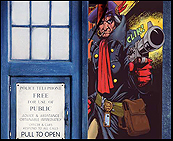 There’s been a lot of pushing the reset button in pop culture recently and I find the results interesting. J.J. Abrams rebooted the Star Trek franchise a few years back and, while some fans complained, I think it was successful. Certainly it was financially successful, which is what the Hollywood moguls really care about.
There’s been a lot of pushing the reset button in pop culture recently and I find the results interesting. J.J. Abrams rebooted the Star Trek franchise a few years back and, while some fans complained, I think it was successful. Certainly it was financially successful, which is what the Hollywood moguls really care about.
At the start of Daniel Craig’s run, the James Bond movies were also rebooted, culminating in the recent spectacular Skyfall, which – again this may be heresy to some – was the best Bond film ever. It’s visually stunning and takes Bond himself to greater depths and heights than I’ve seen up until now.
Sherlock Holmes has been reinterpreted into the modern age with two versions, the BBC’s magnificent Sherlock and Elementary on CBS. Both are true to the basics and it’s amazing how well the classic fictional detective gibes with modern times.
Of course, we’ve witnessed DC’s rebirth with the New 52. Again, you can argue as to whether it is artistically successful but I don’t think you can argue that it hasn’t been financially successful thus far. This summer will see a movie rebooting of Superman with Man of Steel. The Christopher Nolan Batman trilogy rebooted that cinematic history as The Amazing Spider-man did with that character’s movie version. X-Men: First Class reimagined Marvel’s mutants and so on. The next Star Wars chapter and the announced Star Wars solo films, while they will undoubtedly respect the previous movies, will probably play hob with what is known as the Extended Universe, the complex continuity that has sprung up around the films via novels, comics, games and more. Depending on how they turn out, that may not be a bad idea.
All my professional comic book writing career, I’ve played with and enjoyed continuity. I respect it but I don’t worship it and I don’t think it is cast in stone. Sometimes, continuity becomes like barnacles on the bottom of a boat and need to be scraped off in order to make the boat (or the franchise) sea/see worthy again.
One of the most successful franchises is the BBC’s Doctor Who and part of its longevity (it celebrates 50 years this year) is its ability to change the actor who is playing the Doctor. It’s built into the series; the Doctor is an alien being who regenerates from time to time into virtually a new character, played by a different actor. The new Doctor doesn’t look, act, dress or sound like any of the other incarnations. The re-invention is a part of the continuity and that’s very clever.
I think this is very healthy; characters and concepts can and should be re-examined and re-imagined for the times in which they appear. They have to speak to and reflect concerns that its current public has if they are going to remain vital and alive.
Can it be overdone or badly done? Absolutely. Some remakes get so far from what the character is about that they might as well be a different character altogether. You want to take a look at the essence of the character, what defines them, and then see how you get back to that, interpreting it for current audiences. Some folks revamp something for the sake of revamping or to put their stamp on the character. I don’t think that usually works very well. Change what needs changing, certainly, but be true to the essentials of the character or concept.
Have I always done that? I don’t think so; when I was given Suicide Squad, I didn’t go back to the few stories that were originally published and work from that. I created a new concept for the title. However, I did reference the old stories and kept them a part of continuity, albeit re-interpreting them. I think we played fair with the old stories.
On The Spectre, Tom Mandrake and I took elements from as many past versions of the character as we could while getting down to what we felt were the essentials. Really, our biggest change was not the Spectre himself but his alter-ego, Jim Corrigan. Originally, he was plainclothes detective in the 30s and our version reflected that. I think that was a key to our success.
Even with my own character GrimJack, after a certain point I drop kicked the character at least 100 years down his own timeline into (shades of the Doctor) a new incarnation. I gave him a new supporting cast and the setting changed as well. It made the book and the character fresh again and made me look at it with new eyes.
The old stories will continue to exist somewhere; they just won’t be part of the new continuity. At some point, that new continuity will be changed as well as the concepts and characters are re-interpreted for a newer audience. That way they’ll remain fresh and alive. Otherwise, they’ll just become fossilized and dead. Who wants that?
MONDAY MORNING: Mindy Newell
TUESDAY MORNING: Emily S. Whitten